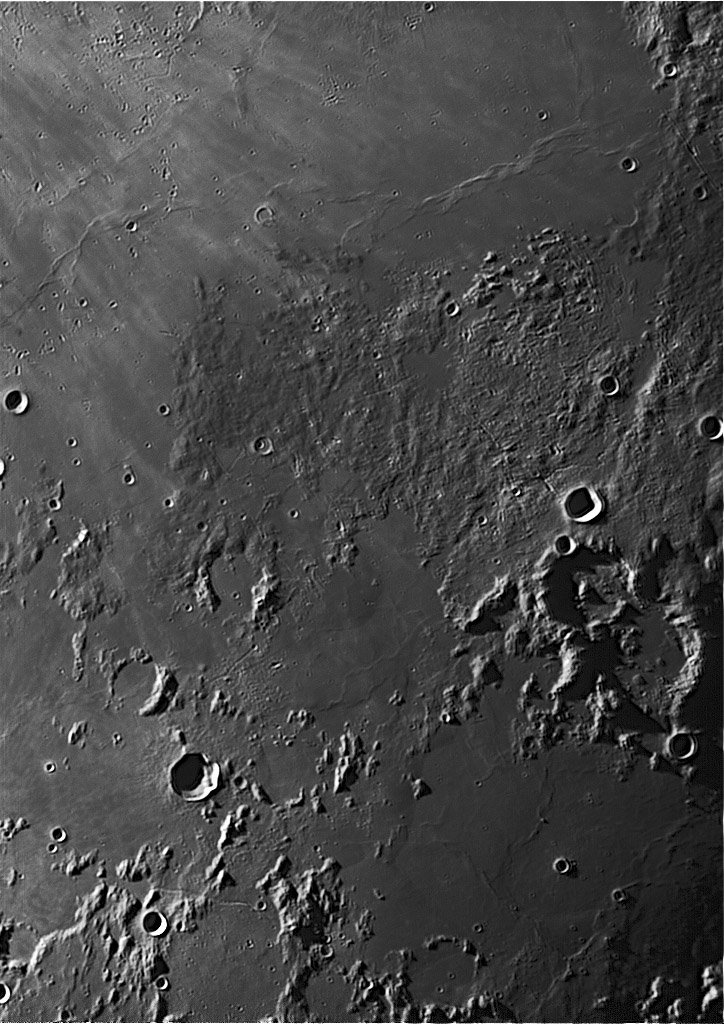January 30, 2013
Intersections

image by Luis Alameda, Alicante, Spain
This is an area where lots of things happened. The mare lavas of Sinus Aestuum at top are splashed by rays and gouged by secondary craters from Copernicus. The lavas probably fill a small impact basin whose inner ring is marked by mare ridges. Sandwiched between these lavas and those of Sinus Medii at bottom right is a region of jumbled hillocks - ejecta from the formation of Imbrium Basin. There is only a hint of what was there below the ejecta arrived - lava-filled low spots that are probably remnants of old craters. The knobby ejecta and hills that are likely to be pieces of crater rims are embayed by lavas that erupted from vents that are mostly invisible. The Imbrium ejecta is also dusted by dark material at center left and near top right. These are large pyroclastic deposits - volcanic ash erupted from rilles and small vents. It is not understood why these deposits erupted in this area, but we can see that the ash erupted after Imbrium formed but before the mare lavas came. And finally, while visiting this area, notice that the lavas at Sinus Medii have some sharp boundaries that mark very gentle changes of slope. In some cases these are broad swells, lava that intruded and inflated the crust but didn't erupt on the the surface. One other boundary, near bottom right below Blagg and Bruce, appears to be a lava-filled rille, perhaps a disconnected piece of the similar faint rille through Oppolzer or the more distant one at bottom left, the Flammarion Rille.
Chuck Wood
Technical Details
8 September 2012. Celestron Nexstar 8i + barlow x2 Takahashi + QHY5- Mono
Related Links
Rükl plate 33
21st Century Atlas chart 17.
Luis' website
Yesterday's LPOD: Little Rilles And a Pit
Tomorrow's LPOD: Pastel Evidence
COMMENTS?
Register, Log in, and join in the comments.



